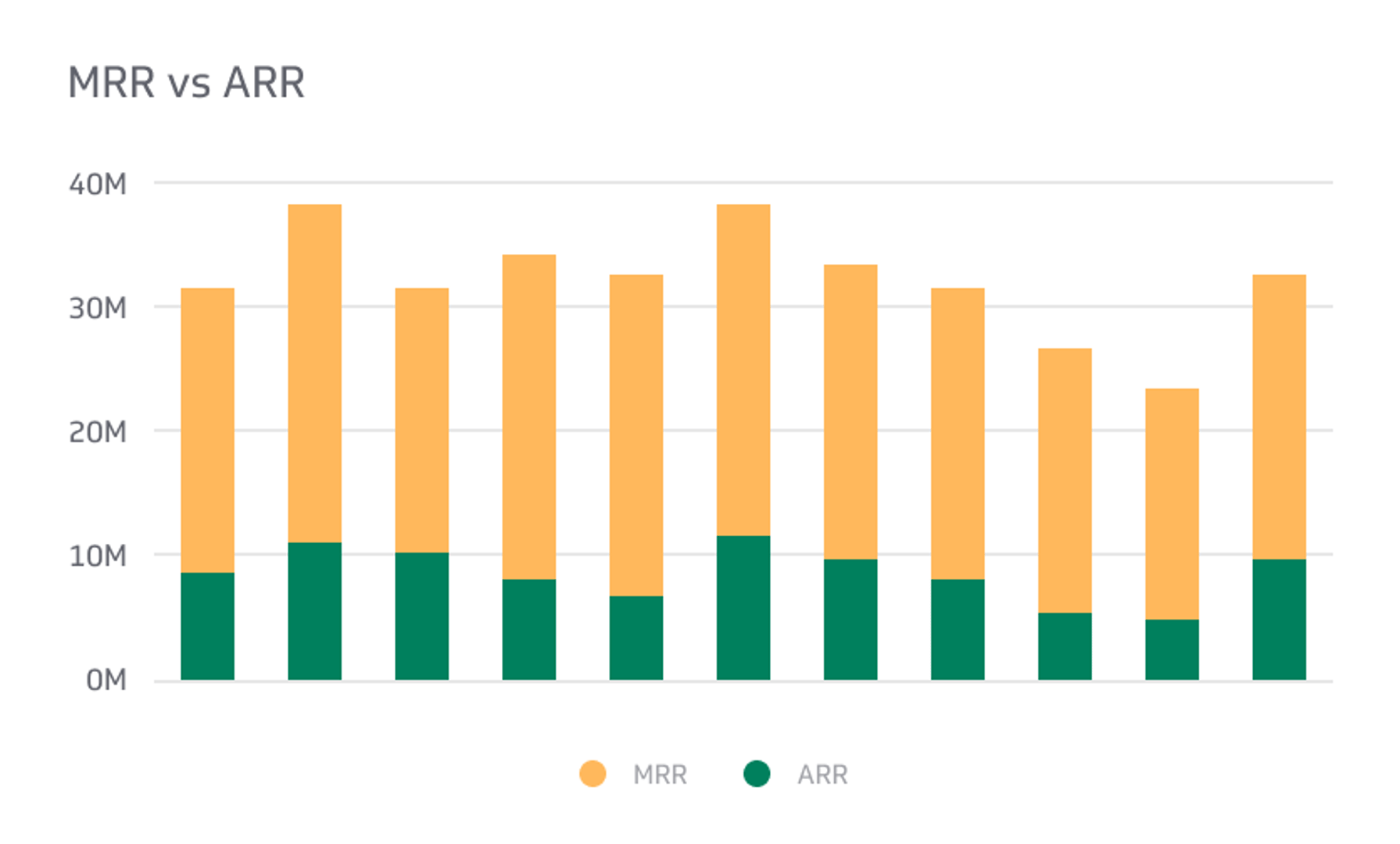SaaS Metrics & KPIs
SaaS Metrics & KPIs for modern teams
Track all your SaaS KPIs in one place
Sign up for free and start making decisions for your business with confidence.
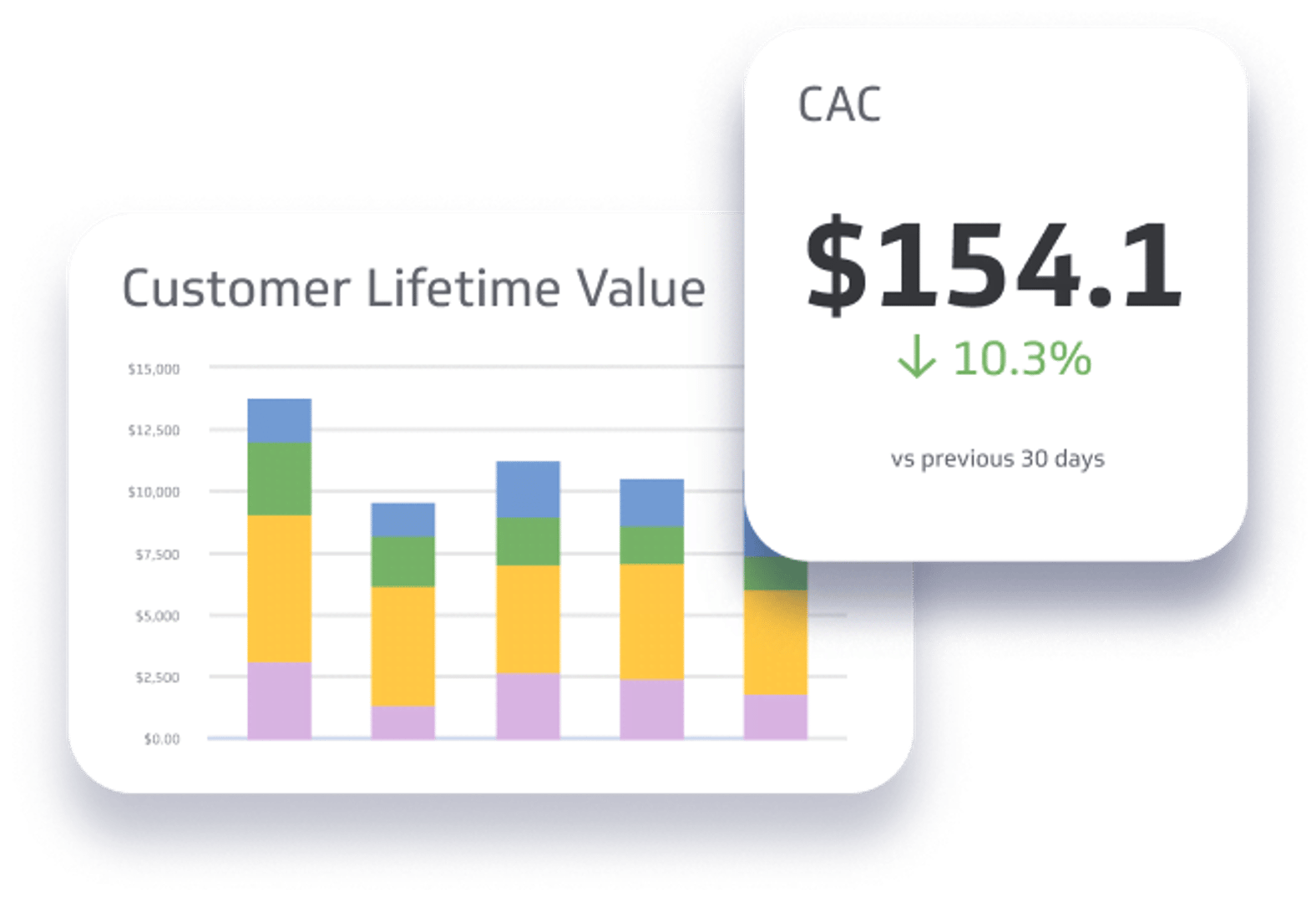
The software-as-a-service business model has become extremely important for digital products such as CRM tools, streaming services, and most cloud-based computing software. People use SaaS services like Microsoft Office, Zoom, and Google Drive everywhere to communicate, share, and organize information better.
The benefits of SaaS will continue to build off each other, and there's no sign of slowing down. Interestingly enough, the number of SaaS startups will be experiencing an annual growth rate of 18% in 2023.
With this in mind, key SaaS KPIs and metrics become vital to measuring the success of these businesses. If you're a young SaaS startup, this article will discuss the best KPIs you need to track in 2023 and the steps to implement them today.
What Is SaaS?
Software-as-a-service is a unique way for companies to sell their software. The main appeal of SaaS is its ability to utilize cloud-based technology on demand without requiring a user to commit to an entire overhaul of their systems and processes.
The SaaS business model has opened the doors for expensive software to become more accessible to the common person. It has also allowed developers to update their software quickly and more efficiently instead of once every few years.
To understand how much the market has grown after making software more accessible, look at this. In 2022, the software-as-a-service market size had a valuation of 251.17 billion USD. That number alone is nothing to scoff at, but by 2029, estimates project it to increase to 883.34 billion USD.
How Does a SaaS Business Model Work?
The SaaS business model works like this; the software provider gives users access to their software for a monthly or annual fee. Those users then have full access to the software provider's software as long as they continue to pay for the service.
Most software-as-a-service isn't contractual, so users can quit paying and using it whenever they like. Additionally, most SaaS-based software comes with trial periods for users to accustom themselves to the service before committing to paying for the software.
How Do SaaS Businesses Measure Performance?
Now that you understand what SaaS is and how it works, it's time to get into how business owners measure performance. There are many ways to measure performance, but a few critical differences exist in how SaaS companies measure their performance with key performance indicators (KPIs).
The focus of SaaS companies comes with how many active monthly users and subscriptions there are. If the numbers are high, that's good. If numbers are bad, it's not good. Other businesses only need to focus on selling a product once to as many people as possible.
SaaS companies must focus on retention and ensuring their active users don't stop using their software. That difference is critical. So, the main KPIs they use to measure performance are customer retention, customer acquisition cost, monthly revenue, and customer lifetime value.
Those KPIs will always be important to SaaS companies when measuring their performance, but they're not the only KPIs. There are a few more key KPIs that SaaS companies should be paying attention to in the current year.
Most Important SaaS KPIs You Need To Track
Plenty of metrics and KPIs exist, but focusing on the most important ones is crucial to the growth of your business. In this case, these KPIs focus on important information that will help you adjust and calculate your SaaS strategies. Here are the most important KPIs that your company needs to track.
Increase Your Monthly Unique Visitors
Monthly unique visitors are every SaaS business's first and most applicable KPI. When looking at growth, your MUV becomes one of the most vital KPIs at your disposal. Here's what you need to know about it.
To be a unique visitor, the visitor must use your software or visit your site at least once within the given period, typically one month. Every time a user returns, your website/software will identify them as the same person, giving them that unique status. Returning visitors don't count.
Frequently, traffic-based metrics don't consider the same recurring visitor and track them as new users instead of returning ones. You want to differentiate and keep track of unique and returning visitors because both provide valuable information for different purposes.
For example, your MUV shows you how much of an impact you have on your target audience. With that information, you get a clear scope of your presence. From there, you can use that information to decide how to build and cultivate more unique visitors.
Monitor Your Customer Conversion Rate
Customer conversion rate is another important KPI to keep track of for SaaS-oriented businesses. Your CCR tracks how many prospects you convert into paying subscribers. Knowing your CCR helps you understand your prospecting efforts as a SaaS company.
Typically, a low conversion rate signals to companies that people are uninterested. From there, you'll have to pick apart your entire sales funnel process and identify where you lose customers before deals close. This loss usually occurs during the customer's free trial period.
Additionally, it helps you identify sales tactics issues. Your sales team may be profiling the wrong customers, and because of that, you find your customer conversion rate extremely low. In this case, understanding your CCR helps push you in that general direction to fix that issue.
The final big use of your CCR is comparing the performance of your advertising channels. If you're running multiple ad campaigns, you'll want to keep track of your conversion rate from those campaigns. Consider this, the higher the conversion rate, the more successful and vice versa.
Adjust Your Customer Acquisition Cost
Another important KPI for SaaS companies to focus on is their customer acquisition cost. Not keeping track of your CAC will lead to overspending and budgeting issues. Understanding what each dollar is going towards and where you can save money is important for your business.
The biggest factors contributing to your CAC are marketing, research, and employee costs. These costs add up when the company exerts more effort to acquire customers. If this happens, you must understand why it's so costly and focus on fixing that issue before your company continues to waste its income.
As a SaaS company, you should always make more money than it costs to acquire a customer, For example, spending $10 to get a customer and making $30 from that customer. Ideally, the more you make from your consumer, the better.
Your CAC doesn't consider the cost of making your goods or products. Instead, it focuses strictly on the cost of getting that consumer to purchase. Please don't confuse the cost of goods sold with CAC because it leads to unnecessary issues.
Ensure a High Customer Retention Rate
A KPI you may be familiar with is customer retention rate. Your customer retention rate is the number of users you currently have active over a certain period. Your CRR is valuable to you as a SaaS company because you rely on monthly active users and subscribers.
Generally speaking, you want a high CRR rate because it means consumers are actively engaging with your product. Conversely, having a low CRR means that your users no longer require your product, or it isn't engaging enough for them to continue to use it.
Unlike retailers and other service businesses, SaaS business models depend on generating as much revenue as possible from their users. If you're not generating enough revenue from each of your subscribers, then you can't justify updates and new features.
Common causes for low CRR are technical issues, lack of features, poor customer support, or ignoring customer feedback. Each of these issues is something a company can work on, but they have to be proactive and attentive to the need of the consumer to improve their CRR.
Focus on Customer Lifetime Value
Similar to your CRR, your customer lifetime value is a KPI that estimates the lifetime value you'll receive from each of your subscribers. While it's an estimate, your CLV is a more important KPI than you think, and here's why.
Understanding the total worth of a customer over time helps companies generate important strategic decisions involving features, marketing, and pricing. Additionally, understanding each customer's value gives you a strong insight into SaaS-focused CAC strategies.
Whether through customer support, experience, or product quality, your CLV opens up discussions of the profitability of each subscriber and the best course of action to capitalize on it.
For example, a strategy that SaaS companies use to improve their CLV is focusing on brand loyalty. They improve brand loyalty and secure recurring revenue through promotions, deals, and outstanding customer service.
Improve Your Average Revenue Per Account
Your average revenue per account tracks how much each account spends per month. Keeping track of how much money you make per subscriber lets you distribute and invest your earnings better.
Most SaaS companies have subscription and add-on tiers to improve their service, so it's not common for every customer to spend the same amount. This KPI is critical for understanding what customers are paying for and why.
SaaS companies will typically adjust what they offer in each service tier based on what consumers are willing to spend their money on. For example, people don't like ads, so if you pay more, you don't have to watch advertisements on certain streaming services like Hulu.
You want to use your ARPA to make important decisions that affect your company's current standing. The KPI focuses on the now, not the before. You'll use your ARPA to understand your potential revenue and adjust your prices per subscription tiers or features.
Increase Your Recurring Monthly Revenue
Your monthly recurring revenue is the total value your business generates from active subscriptions within the given month. Your MRR is important because it gives you an idea of the total revenue you generate each month.
There are different types of MRR you can look into to provide insight into the health of your business, but these are the most relevant ones to SaaS companies.
- Expansion MMR
- Reactive MMR
- Contraction MMR
- Churned MRR
When considering the bigger picture, the value of your MMR increases. You must understand that your MMR isn't static, and you'll often see dips and shifts. It's normal, and you shouldn't panic about too many inconsistencies.
Instead, you want to use your MMR to help decide how to invest that revenue. Since your MMR shifts, you must be adaptive and work with the income you generate monthly. Start looking at your business needs and how to work with your MMR regardless of the amount.
Understand Your Product-Qualified Leads (PQL)
Your product-qualified leads are people that have some general experience with your software. SaaS companies rely on PQLs to cut marketing costs and sales efforts. They convert prospects into paying customers by providing free trials or freemium experiences for users to acquaint themselves with.
Your PQL helps show how impactful certain features are during your trial period. Customer acquisition can get expensive, especially for SaaS companies, so improving your PQL strategy is another way companies help reduce that cost and improve your onboarding.
The idea is to give your customers a wonderful first-hand experience of your product and hope your software wins them over. For example, if users are extremely fond of using a certain feature, improve on it and advertise it better for your free trial users.
Raise Your Organic and Paid Traffic ROI
Now that 28% of business activity occurs online, it's important to understand website traffic. There are two forms of traffic ROI, organic and paid. Both are important, but marketers tend to focus on paid first because making a return on paid traffic is important.
Most businesses launch advertising campaigns, and they expect traffic on their website through those campaigns. Your paid traffic ROI represents the money you make back for each customer you successfully convert from your digital advertising efforts.
The organic traffic you get falls under the same category, but your business acquires it through SEO means or word-of-mouth advertising. The amount you make from organic traffic isn't less important than your paid traffic ROI, but your paid marketing efforts mustn't go to waste.
Monitor how many visitors turn into customers regardless of organic or paid traffic. If it's a substantial amount, keep up the good work. If it's not, fix it immediately. Remember, use your traffic ROI to adjust your advertising strategies when necessary.
Analyze Your Churn Rate
Your churn rate tells you the number of subscribers who unsubscribed within a set time. Competitors, pricing, and market trends all affect your churn rate percentage. Other vital factors impact your churn rate, such as your target audience. A higher churn rate could indicate customers who aren't happy with their current software experience.
Additionally, if your software isn't a permanent solution for consumers, you may see a higher churn rate, which isn't bad if you expect this outcome.
However, seeing a high churn rate is extremely worrying if your software relies on constant user retention and interaction. SaaS companies will look at their features and pricing strategies when they notice a higher-than-average churn rate.
Track Your Product Signups
SaaS companies focusing on a freemium or trial version should look at how many people sign up for their product. SaaS companies use their product signup metric to indicate how well their product and marketing efforts are doing in the public eye.
While it's not the fanciest or most complex KPI, it's still a very strong indicator of how healthy your product is. For example, if people sign up willingly and independently, the information and features you display on your website show positive signs of success.
If your product signup rates aren't that great, there must be problems with your marketing strategy or product information. Checking to see if people understand why your product benefits them is the first logical place to start.
As a KPI, your product signups tie into your marketing efforts more than any other KPI. Providing the right information to the right target audience will not only increase your signups, but it will also improve your PQL and save you more money.
Address Your Support Ticket Creation Rate
Using your support ticket creation rate as a KPI will help you understand your users' value and help improve your product's quality. You want your product to stand out and be better than your competitors, so paying attention to these tickets is vital.
Once you look at the rate at which tickets are coming in, you want to look at the ticket's content. What issues are arising, and why are they important enough for the consumer to go out of their way to submit a support ticket? Solve these issues and make them your top priority.
Keeping your support tickets low means your business actively addresses issues and your customers are happy. That leads to improved brand loyalty and impacts your MRR and other KPIs.
Important Areas Your KPI Should Focus On
Not every metric and KPI will apply to your business, but most of the ones discussed here will. Even so, it's important to understand what your KPIs must focus on. If you're not going to use any of the ones on this list, at least ensure the ones you're using focus on one of these categories.
- Revenue: Your revenue is vital to keeping your business alive, so using KPIs that give you an idea of the health of your revenue is extremely important for SaaS companies. KPIs like MRR and average revenue per account are great revenue-focused KPIs.
- Marketing and Sales: KPIs like organic traffic, paid traffic, PQL, and customer acquisition cost give you insight into your marketing and prospecting efforts, so keep these in mind.
- Retention: Use KPIs that show customer retention change. Your CRR and MRR show how well you hold your customers and help you make decisions directly impacting your product quality.
- Customer Service: Try focusing on customer service-focused KPIs. Support tickets, product guides, and billing assistance sometimes come as an afterthought to many, but keeping an eye on these things will separate you from competitors.
- Engagement: Engagement KPIs have one purpose, keep the customer using your software. For example, churn rate is a KPI that helps measure customer engagement.
How Your KPIs Work Together
KPIs provide you with goals, objectives, and information, but you must transform that into something tangible. Some may find the info from KPIs mundane, overwhelming, or uninteresting. The truth is that each KPI has a purpose, and you need to determine what purpose that KPI serves.
For example, your customer acquisition rate is expensive, but what do you do with that information? Normally, you'd look into why that number is so high. From there, you'll adjust and change things to lower that number and reap the rewards that come with it.
These KPIs are vital to SaaS companies because they play off each other and focus on engagement, retention, and profit. For example, your PQL and customer acquisition cost work together.
If your PQL strategy is good, it will directly impact how much you need to spend to convert customers into using your product. Lowering your CAC lets you spend more on advertising and marketing, affecting your traffic ROI.
From that, you can get an idea of your conversion rate from the traffic on your website. If it's good, then you'll improve your monthly recurring revenue. That doesn't mean that these KPIs are the end all be all, but they are extremely important to most SaaS companies. How they work together is vital to your SaaS business model.
How To Apply Your SaaS KPIs to Your Business
Understanding KPIs and how to read them is fantastic, but having some practical use is important. This article touched on ways a business uses KPIs, but now it's time to see how you can apply these KPIs to transform your business process.
There are four key steps in applying your KPI to your business. The first of these steps is to develop your KPI.
Step 1: KPI Development
You don't have to create new KPIs, but you must develop new purposes for these current KPIs.
For example, your SaaS company aims to improve your customer satisfaction levels. It's your job to determine the best ways to measure customer satisfaction and track that KPI.
One easy KPI to turn to is customer support tickets, but a new one that hasn't come up yet is using social media to gauge customer satisfaction levels. For example, collect data on users' positive keywords when talking about your brand.
Step 2: Create Goals and Objectives
Setting realistic goals and expectations when using KPIs is important, especially since nearly 90% of goal-setting initiatives fail because of unreasonable expectations. If your mission is to increase your subscription count, your objectives must actively work towards improving your subscription count.
For example, you'll focus on improving your website, your PQL, and MUV to increase your subscription count. Each time you'll define a purpose for the objective and how it aligns with your goals.
Step 3: Analyze Each KPI
Your third step is to start analyzing your KPI during your operation. Please don't ignore any information you gather, no matter how damaging it is to your company.
Additionally, working with inaccurate data is more damaging than working with no data. Check the quality of your KPIs and metrics to ensure your data is up-to-date and relevant to your company's goals.
Step 4: Compare Your Performance With Results
With evident goals and immaculate data, it's time to measure the performance of your SaaS business. Apply your KPIs to your business operation and measure your performance with the results.
If you see improvements continue operating as you are, but start experimenting and focusing on other problem sectors of your SaaS business. If your results are lacking, look for areas to improve.
Frequently Asked Questions
Here are some common questions that relate to SaaS KPIs and their importance to your business:
How do you measure the performance of a SaaS company?
This question has plenty of parts that come with it, but essentially you measure it like any other business. You measure the company's profitability and its relation to its competitors. One way to do this is with the various metrics and KPIs at your disposal, such as MRR, CRR, and CCR.
Which SaaS metrics are most important?
If you narrow it down to a small list, the most important SaaS metrics are customer retention, monthly recurring revenue, customer churn rate, and customer acquisition cost. Even so, what KPIs are important will change depending on your business model and goals.
What's the appeal of SaaS?
For many consumers, the appeal of SaaS comes with the ease of access and updates they get from using a service. Through the cloud, most SaaS software is accessible on multiple devices and platforms. For companies, consistent revenue is the main appeal.
What's the difference between a KPI and a metric?
The key difference between a KPI and a metric is what they help with. KPIs focus on how things affect specific business goals and objectives. KPIs help with strategy implementation, while metrics help with measuring business activity.
Is Amazon a SaaS?
Amazon is a SaaS company that focuses on delivery-as-a-service. People who think of SaaS companies usually think of streaming services like Netflix, Hulu, Peacock, or CRM tools, but most subscription-based models fall under the SaaS category.
Bottom Line
KPIs like churn rate, customer retention, monthly recurring revenue, and customer acquisition cost are key KPIs to help push your SaaS company forward and meet goals and expectations.
Consider the KPIs on this list when creating your next advertising campaign or even how you invest your monthly recurring revenue. Remember, KPIs focus on business goals and objectives. Meet those goals and improve and separate yourself from the competition.

.png)
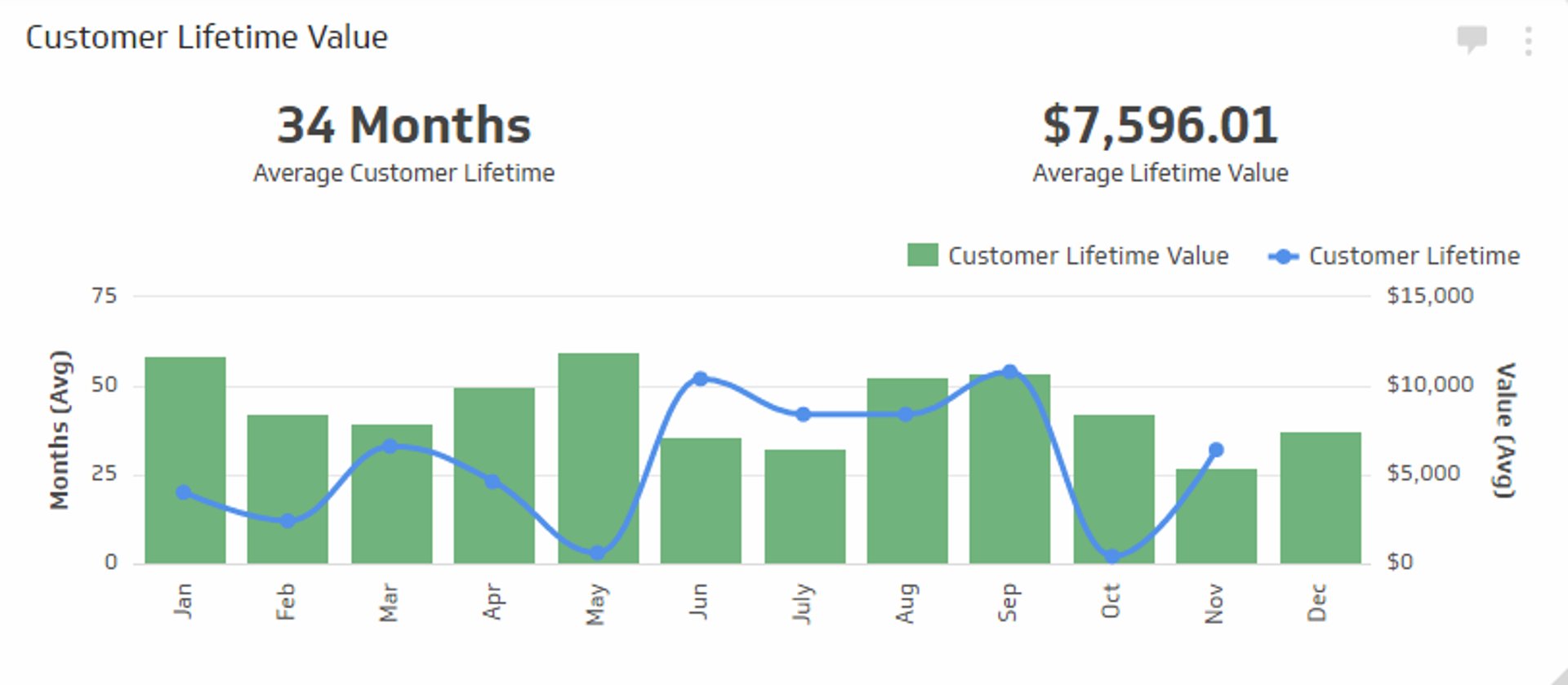



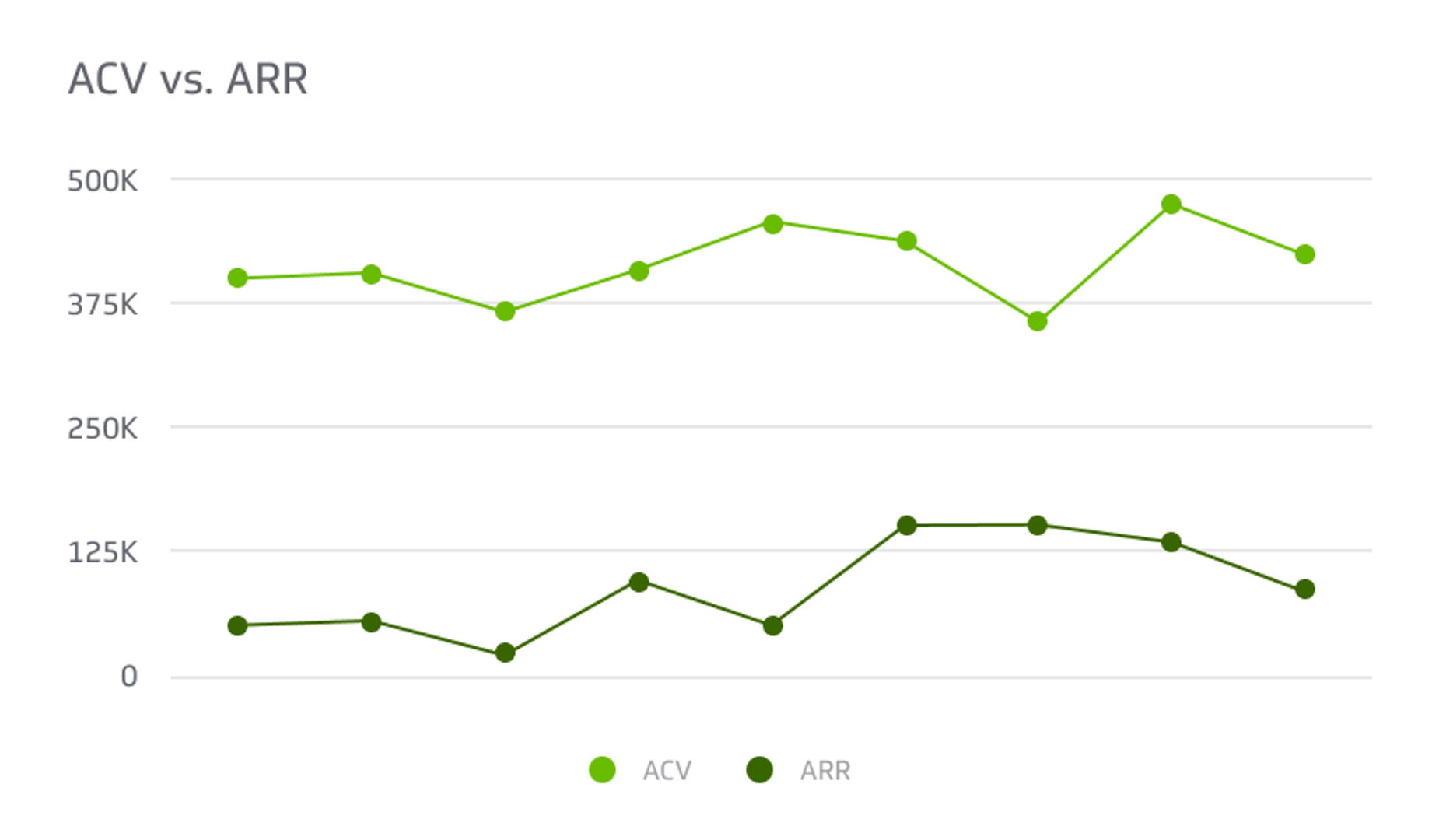
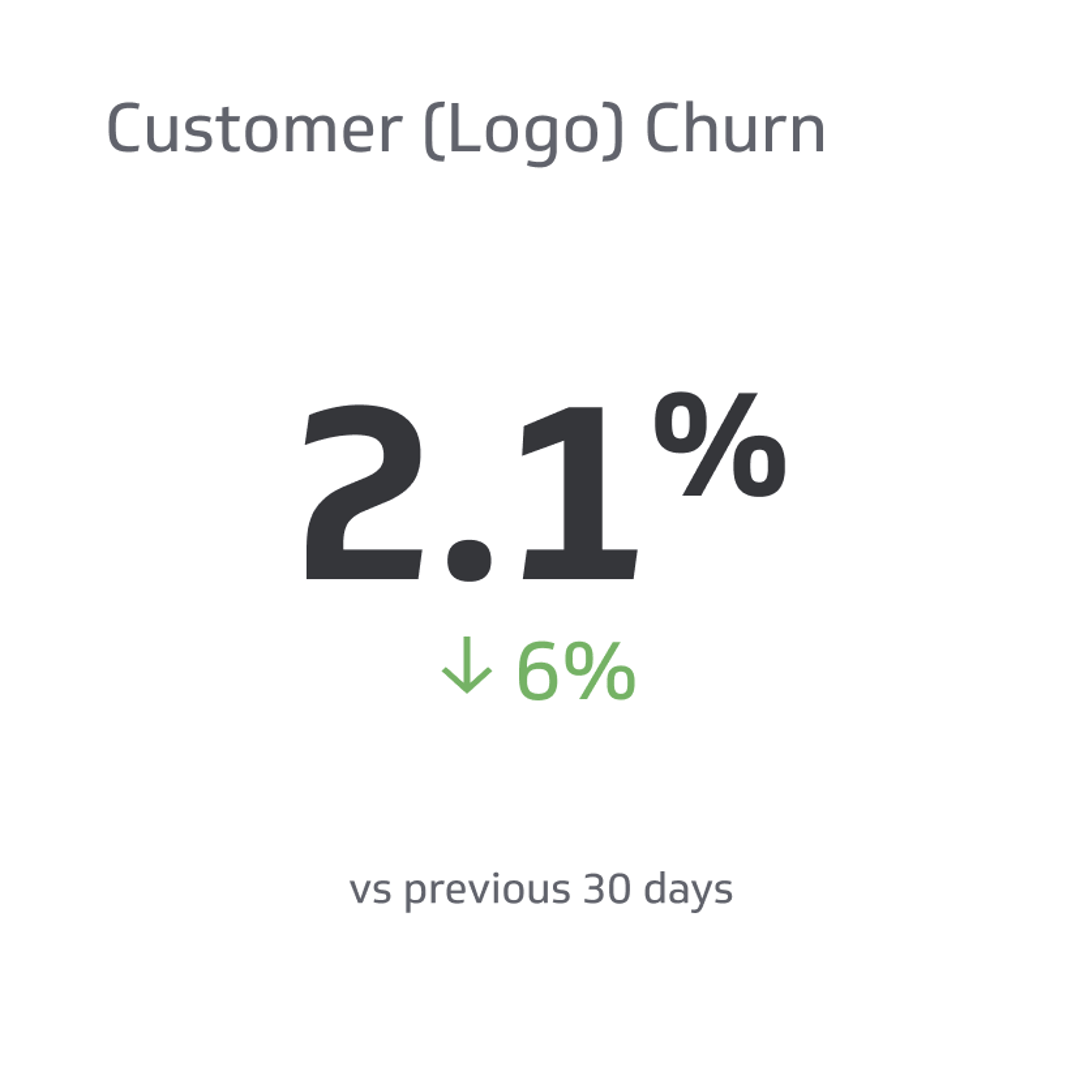 Churn.png)
